|
This lens was born in 2010, and surprisingly, it was already available for purchase immediately after the announcement. When I got this lens for testing, I was sure that someone had made a mistake. It is amazingly similar to the 24-70/2.8. On the other hand, when I held this lens in my hand, the difference was immediately clear – its weight! This lens is significantly lighter than the 24-70. I tried to understand Nikon's logic in presenting this lens. There are already three lenses with similar focal lengths suited for the same use – wide/very wide zoom for FF. The first lens, the classic old-timer: the 17-35/AFS 2.8, has been a fast and reliable lens for some years now (in the professional market). This lens was born in 1999, and has turned out to be the main working tool for professional photographers, especially press professionals. The second historical lens is the younger sister of the tested lens, the 18-35, born in 2000 with a 3.5-4.5 variable aperture, light in weight and cost. This lens was the inexpensive alternative to the 17-35 lens. The third lens, the 14-24/2.8, born in 2007 in conjunction with the appearance of the D3 in the photographic world, has become the best quality wide zoom lens today. The 14-24 is large in size and heavy, weighs a lot (about 1000gr = 1kg) and costs dearly. Gradually, it became the photographers' favorite nature wide-lens, even for Canon users (with a suitable adapter). Its optical quality became a stepping stone in the photography world and until now (as I am writing this article) it is still beyond competition. What is the point then in introducing another lens to this line – especially a high-cost one? This lens costs about $1260 US (the 17-35 costs about $1600-$1700 US, the 14-24 costs about $1600-$1700 US and the 18-35 costs about $600 US) in addition, the new lens has a maximal aperture of 4, not 2.8. Why did Nikon see it fit to introduce this lens? One of the reasons is its size and weight. Another explanation could be its price – $1260 US, which amounts to about two thirds of the more expensive lenses. Another explanation could be its large zoom range that is larger than any of the other three lenses. Perhaps this lens is the forerunner of a new production line of quality lenses with a maximal aperture of 4, similar to Canon's production line, which is the envy of many "Nikonists". Only the future will tell. Nikon was missing a middle lens with a permanent aperture of 4, such as the 24-120/4, which is similar to the Canon 24-105 but this lens arrived later on. This lens includes some special features: a complicated optical structure that is rich in aspheric elements and the VR II mechanism.
Is this the first lens for FF that includes a stabilizer for such a focal length? Is a stabilizer required for such short focal lengths? We will discuss this issue later on. Very often, when I travel, I use the "antique" Sigma 15-30 lens, which is similar to the tested lens. The Sigma is about the same length and weight as the tested lens, its optical structure is similar – 17 elements in 13 groups and a similar zoom range. The Sigma aperture range is 3.5-5.6. The Sigma is a good quality lens for its price (it cost me about $500 US as far as I can remember) and it served me well back in the historic D100 days. After the Nikon 12-24 came out, it was left behind in the closet. The Sigma returned to service with the appearance of the D700 (a full frame sensor camera). The Sigma has few problems, it tends to flare easily and the sharpness at the edges is not amazing. Upon closing the aperture, it can certainly be used for any purpose, if one is watchful for flares. Is the new lens an appropriate replacement? We will soon see. When I mounted the lens onto the camera, I noticed its classic switches: MA/M and the VR activation switch. In my hand it feels very much like the 24-70, having a rigid and polished construction, similar to all the new professional Nikon lenses. The stabilizer works very quietly – in contrast to other lenses which rustle when the stabilizer is on. The lens has a fast focusing system with a built-in ultrasonic focus engine. My first impression is that this engine is not as quick as the engine of the 24-70 but is similar in speed to the built-in engine of the 14-24.
A possible reason can be the large number of items arriving at the auto focus system with wide angle lenses – this reduces the speed of the engine until the camera decides what to focus on. The zoom system is smooth and the manual focus is very pleasant to use, similar to other new Nikon lenses. The lens is professionally constructed just as other expensive Nikon lenses. This is what the lens looks like:  | | Color Space: sRGB |
The MTF curve looks like this: By looking at the MTF, one can see that at the center of the frame the lens is very sharp – especially in its long-range – 35mm. By looking at the proximity of the sagittal and meridional curves, one can see that the expected bokeh is good. On the other hand, one can also see that in maximal aperture (in which the MTF was measured) at the wide-angle state, there is a significant decrease in sharpness at the frame edges. This is not the case at the tele state. The continuous red lines in the MTF that actually represent the lens contrast are maintained almost at a maximum (excluding the edges in the wide-angle state). The following constitute its technical specifications:  | | Color Space: 65535 |
Now we will see how it operates during a field test. At the 35mm state my garden looks like this: 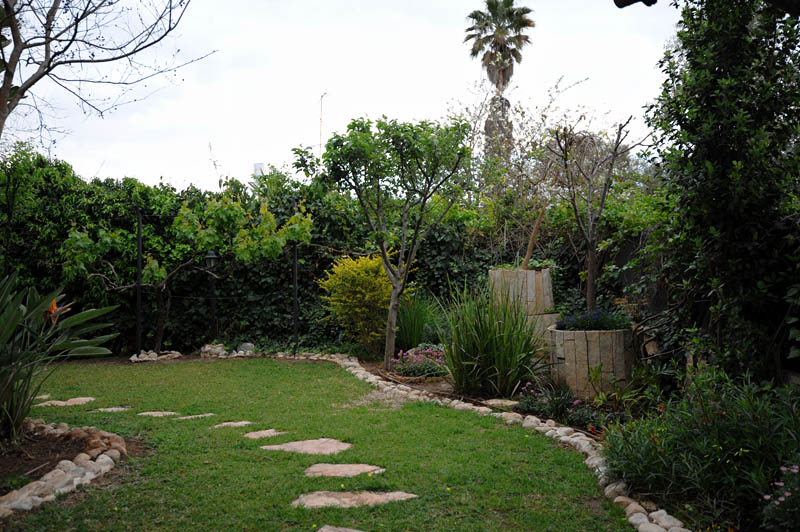 | | Model: NIKON D700 Exposure Time: 1/800sec F Number: 4 Max Aperture Value: 4 Focal Length: 35mm Exposure Program: Aperture priority Exposure Bias Value: 0 ISO Speed Ratings: 400 Metering Mode: Pattern White Balance: Auto white balance Flash: Flash did not fire Focal Length In 35mm Film: 35 Date Taken: 2010:03:19 12:52:59 Color Space: sRGB |
From the same point, at the 16mm state it looks like a soccer field:  | | Model: NIKON D700 Exposure Time: 1/1000sec F Number: 4 Max Aperture Value: 4 Focal Length: 16mm Exposure Program: Aperture priority Exposure Bias Value: 0 ISO Speed Ratings: 400 Metering Mode: Pattern White Balance: Auto white balance Flash: Flash did not fire Focal Length In 35mm Film: 16 Date Taken: 2010:03:19 12:52:57 Color Space: sRGB |
It reproduces natural colors (these spring flowers that have a rainbow of colors demonstrate this clearly):  | | Model: NIKON D700 Exposure Time: 1/250sec F Number: 4 Max Aperture Value: 4 Focal Length: 16mm Exposure Program: Aperture priority Exposure Bias Value: 0 ISO Speed Ratings: 400 Metering Mode: Pattern White Balance: Auto white balance Flash: Flash did not fire Focal Length In 35mm Film: 16 Date Taken: 2010:03:19 12:42:02 Color Space: sRGB |
The bokeh took me completely by surprise. Despite the MTF curves and the 9-leaf circular aperture, I did not expect such a good bokeh from an ultra wide-angle lens. The following are four examples: The first one: 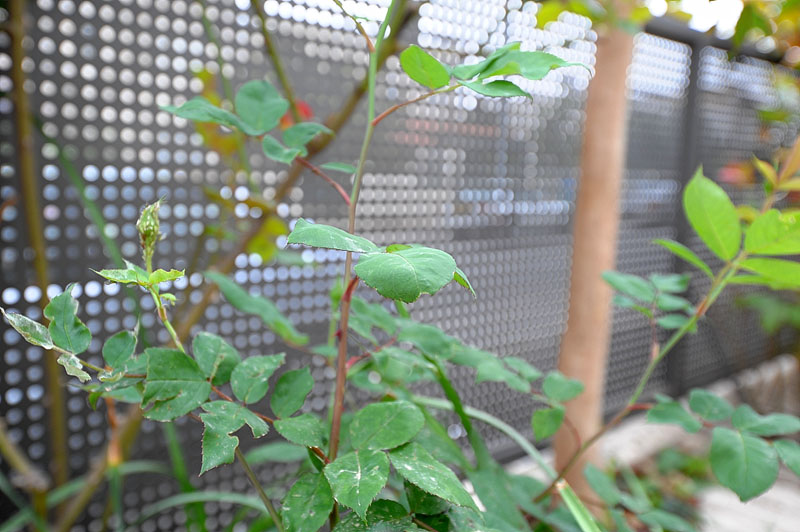 | | Model: NIKON D700 Exposure Time: 1/60sec F Number: 5.6 Max Aperture Value: 4 Focal Length: 35mm Exposure Program: Aperture priority Exposure Bias Value: 0 ISO Speed Ratings: 400 Metering Mode: Pattern White Balance: Auto white balance Flash: Flash did not fire Focal Length In 35mm Film: 35 Date Taken: 2010:03:19 12:45:40 Color Space: sRGB |
The second: 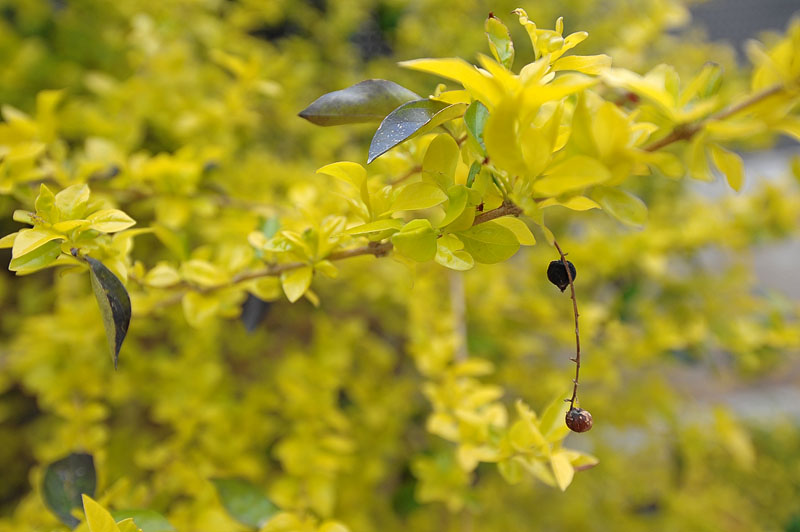 | | Model: NIKON D700 Exposure Time: 1/320sec F Number: 5.6 Max Aperture Value: 4 Focal Length: 35mm Exposure Program: Aperture priority Exposure Bias Value: 0 ISO Speed Ratings: 400 Metering Mode: Pattern White Balance: Auto white balance Flash: Flash did not fire Focal Length In 35mm Film: 35 Date Taken: 2010:03:19 12:46:09 Color Space: sRGB |
The third: 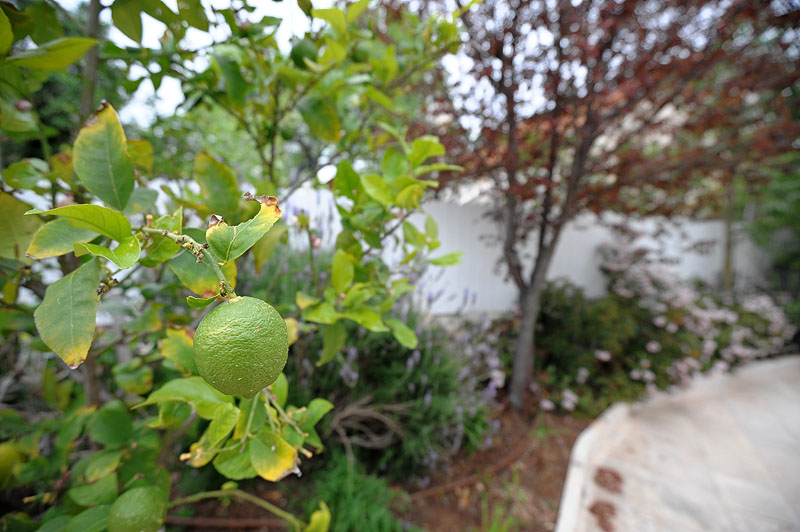 | | Model: NIKON D700 Exposure Time: 1/400sec F Number: 4 Max Aperture Value: 4 Focal Length: 16mm Exposure Program: Aperture priority Exposure Bias Value: 0 ISO Speed Ratings: 400 Metering Mode: Pattern White Balance: Auto white balance Flash: Flash did not fire Focal Length In 35mm Film: 16 Date Taken: 2010:03:19 12:47:16 Color Space: sRGB |
And the fourth:  | | Model: NIKON D700 Exposure Time: 1/125sec F Number: 4 Max Aperture Value: 4 Focal Length: 35mm Exposure Program: Aperture priority Exposure Bias Value: 0 ISO Speed Ratings: 400 Metering Mode: Pattern White Balance: Auto white balance Flash: Flash did not fire Focal Length In 35mm Film: 35 Date Taken: 2010:03:19 12:43:12 Color Space: sRGB |
All my efforts to fail the bokeh test with different background elements did not succeed. The lens has a great bokeh considering its short focal length. One can take pictures from a relatively close range. This is not a macro lens, but you can shoot in close range – from about 10-12cm from the edge of the lens (28cm from the focusing plane). The first example stars my model lemon:  | | Model: NIKON D700 Exposure Time: 1/400sec F Number: 4 Max Aperture Value: 4 Focal Length: 35mm Exposure Program: Aperture priority Exposure Bias Value: 0 ISO Speed Ratings: 400 Metering Mode: Pattern White Balance: Auto white balance Flash: Flash did not fire Focal Length In 35mm Film: 35 Date Taken: 2010:03:19 12:47:12 Color Space: sRGB |
The second example – the bottle cork:  | | Model: NIKON D700 Exposure Time: 1/40sec F Number: 4 Max Aperture Value: 4 Focal Length: 35mm Exposure Program: Aperture priority Exposure Bias Value: 0 ISO Speed Ratings: 200 Metering Mode: Pattern White Balance: Auto white balance Flash: Flash did not fire Focal Length In 35mm Film: 35 Date Taken: 2010:03:19 12:55:07 Color Space: sRGB |
The third example – creating drama, just as I like to, with a wide-angle lens. The good bokeh helps here: 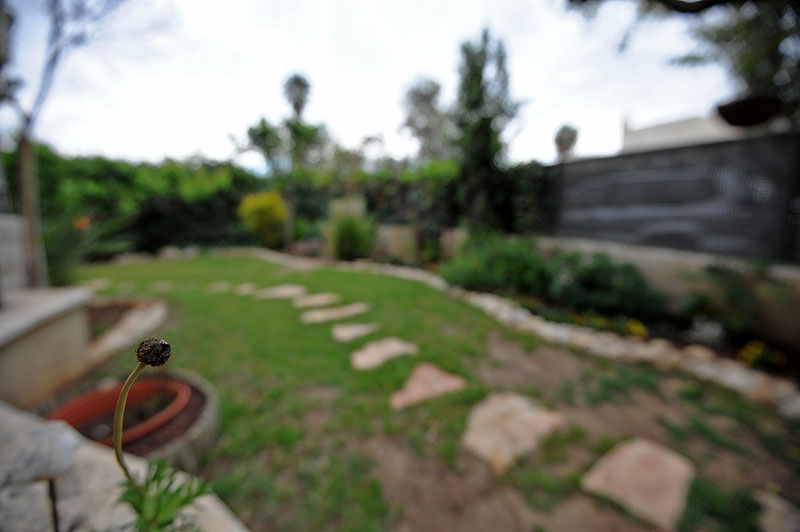 | | Model: NIKON D700 Exposure Time: 1/800sec F Number: 4 Max Aperture Value: 4 Focal Length: 16mm Exposure Program: Aperture priority Exposure Bias Value: 0 ISO Speed Ratings: 400 Metering Mode: Pattern White Balance: Auto white balance Flash: Flash did not fire Focal Length In 35mm Film: 16 Date Taken: 2010:03:19 12:52:14 Color Space: sRGB |
The lens competes perfectly with a backlight, proof of its quality coatings:  | | Model: NIKON D700 Exposure Time: 1/500sec F Number: 4 Max Aperture Value: 4 Focal Length: 16mm Exposure Program: Aperture priority Exposure Bias Value: 0 ISO Speed Ratings: 400 Metering Mode: Pattern White Balance: Auto white balance Flash: Flash did not fire Focal Length In 35mm Film: 16 Date Taken: 2010:03:19 12:42:53 Color Space: sRGB |
The lens is flare free – even when the sun is within the frame:  | | Model: NIKON D700 Exposure Time: 1/4000sec F Number: 4 Max Aperture Value: 4 Focal Length: 16mm Exposure Program: Aperture priority Exposure Bias Value: 0 ISO Speed Ratings: 200 Metering Mode: Pattern White Balance: Auto white balance Flash: Flash did not fire Focal Length In 35mm Film: 16 Date Taken: 2010:03:19 14:36:49 Color Space: sRGB |
This is very surprising for the wide-angle lens. It is definitely possible that at other lighting angles flare will appear – but they will appear lightly, if at all. This lens has very slight lateral (at the edges) and longitudinal (at the depth of the frame) color aberrations thanks to the ED elements and its optical structure. On the other hand, at the wide-angle state it has visual spatial aberrations – barrel aberrations. These aberrations can be easily fixed in Photoshop, but Nikon could have made an effort to remove them: 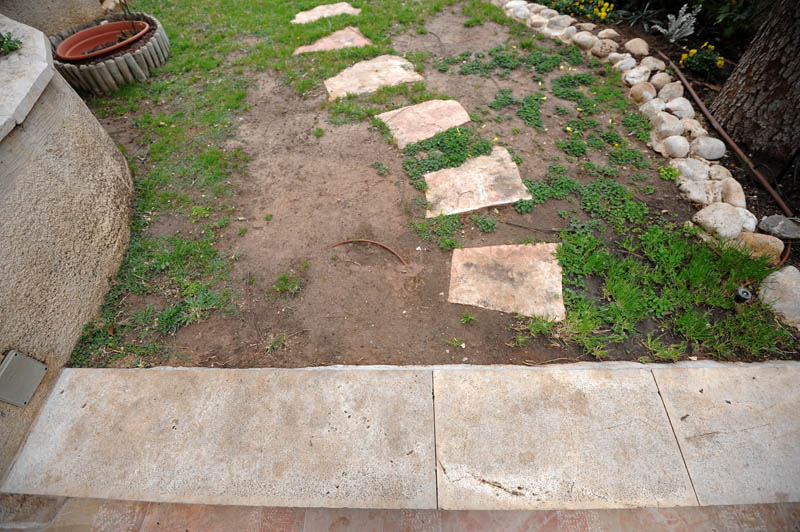 | | Model: NIKON D700 Exposure Time: 1/500sec F Number: 4 Max Aperture Value: 4 Focal Length: 16mm Exposure Program: Aperture priority Exposure Bias Value: 0 ISO Speed Ratings: 400 Metering Mode: Pattern White Balance: Auto white balance Flash: Flash did not fire Focal Length In 35mm Film: 16 Date Taken: 2010:03:19 12:53:25 Color Space: sRGB |
The steps' straight line appears slightly curved. If we shoot a door frame, at a height photographic state, the edges will appear slightly curved. As mentioned before, this can be easily fixed but they shouldn't have been there in the first place. At the long state (35mm) no pincushion aberrations were observed (the opposite aberration – outside curving). This poses no problem for nature, street and events photography, but can be a problem for architectural and indoor photography. The lens has slight vignetting at the wide open state with an open aperture, which disappears when closing aperture even 1 stop (at the upper right corner): 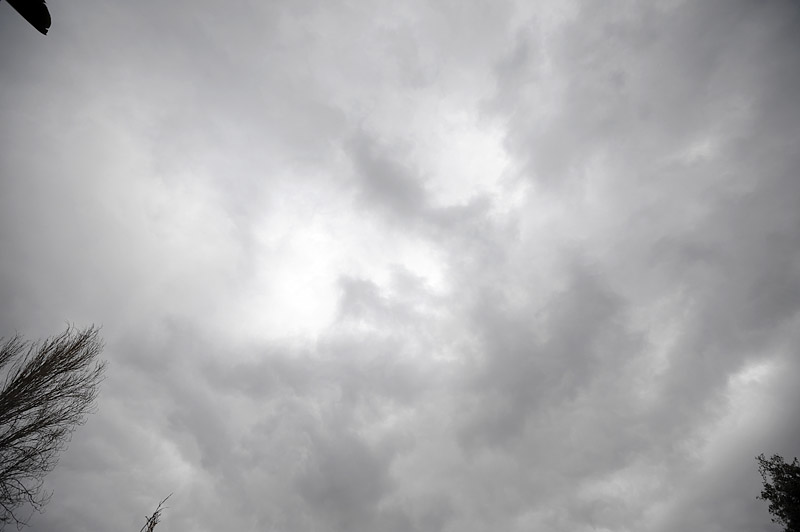 | | Model: NIKON D700 Exposure Time: 1/6400sec F Number: 4 Max Aperture Value: 4 Focal Length: 16mm Exposure Program: Aperture priority Exposure Bias Value: 0 ISO Speed Ratings: 400 Metering Mode: Pattern White Balance: Auto white balance Flash: Flash did not fire Focal Length In 35mm Film: 16 Date Taken: 2010:03:19 12:44:23 Color Space: sRGB |
Its microcontrast (the ability to differentiate between slight nuances of brightness and hue) is excellent even at close range shooting – as expected from the MTF curves: 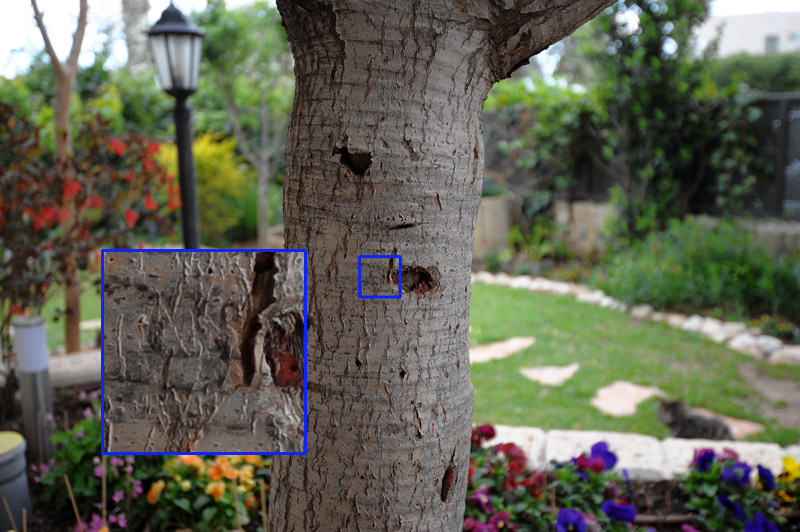 | | Model: NIKON D700 Exposure Time: 1/250sec F Number: 4 Max Aperture Value: 4 Focal Length: 35mm Exposure Program: Aperture priority Exposure Bias Value: 0 ISO Speed Ratings: 400 Metering Mode: Pattern White Balance: Auto white balance Flash: Flash did not fire Focal Length In 35mm Film: 35 Date Taken: 2010:03:19 12:40:46 Color Space: sRGB |
Its sharpness at the close range and the wide-angle state is very good at a wide open aperture: 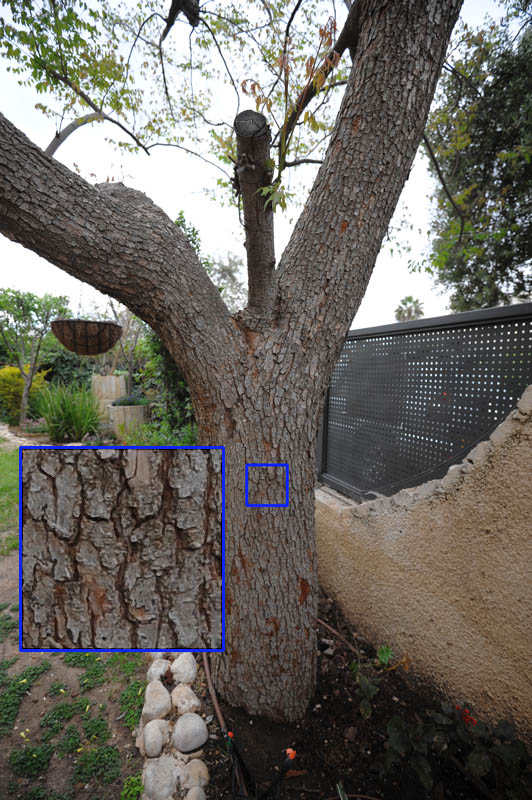 | | Model: NIKON D700 Exposure Time: 1/500sec F Number: 4 Max Aperture Value: 4 Focal Length: 16mm Exposure Program: Aperture priority Exposure Bias Value: 0 ISO Speed Ratings: 400 Metering Mode: Pattern White Balance: Auto white balance Flash: Flash did not fire Focal Length In 35mm Film: 16 Date Taken: 2010:03:19 12:40:58 Color Space: sRGB |
Ath close range and tele state: 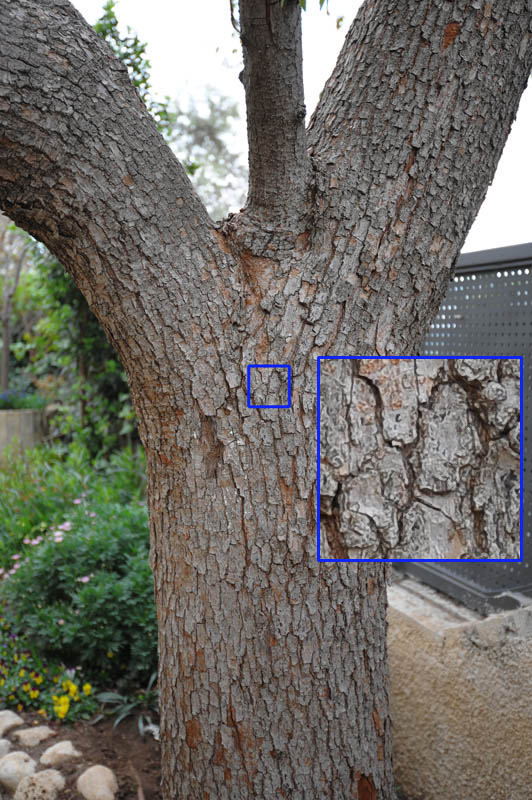 | | Model: NIKON D700 Exposure Time: 1/250sec F Number: 4 Max Aperture Value: 4 Focal Length: 35mm Exposure Program: Aperture priority Exposure Bias Value: 0 ISO Speed Ratings: 400 Metering Mode: Pattern White Balance: Auto white balance Flash: Flash did not fire Focal Length In 35mm Film: 35 Date Taken: 2010:03:19 12:41:01 Color Space: sRGB |
At the long range, in the wide-angle state, the sharpness is better and the contrast is slightly decreased:  | | Model: NIKON D700 Exposure Time: 1/800sec F Number: 4 Max Aperture Value: 4 Focal Length: 16mm Exposure Program: Aperture priority Exposure Bias Value: 0 ISO Speed Ratings: 400 Metering Mode: Pattern White Balance: Auto white balance Flash: Flash did not fire Focal Length In 35mm Film: 16 Date Taken: 2010:03:19 12:45:13 Color Space: sRGB |
When closing the aperture at one stop – the sharpness and contrast is excellent:  | | Model: NIKON D700 Exposure Time: 1/500sec F Number: 5.6 Max Aperture Value: 4 Focal Length: 16mm Exposure Program: Aperture priority Exposure Bias Value: 0 ISO Speed Ratings: 400 Metering Mode: Pattern White Balance: Auto white balance Flash: Flash did not fire Focal Length In 35mm Film: 16 Date Taken: 2010:03:19 12:45:25 Color Space: sRGB |
In the tele state it’s the same. At a wide open aperture: 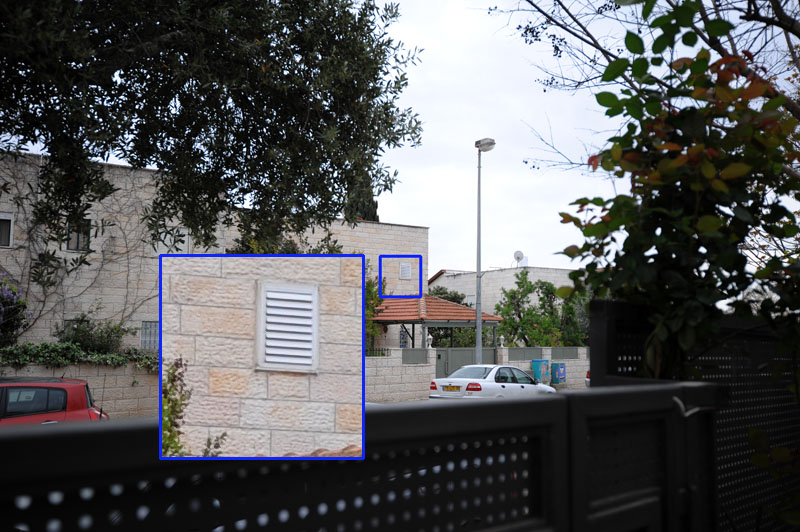 | | Model: NIKON D700 Exposure Time: 1/1000sec F Number: 4 Max Aperture Value: 4 Focal Length: 35mm Exposure Program: Aperture priority Exposure Bias Value: 0 ISO Speed Ratings: 400 Metering Mode: Pattern White Balance: Auto white balance Flash: Flash did not fire Focal Length In 35mm Film: 35 Date Taken: 2010:03:19 12:45:16 Color Space: sRGB |
And when closing stop to 5.6 the sharpness and contrast are excellent: 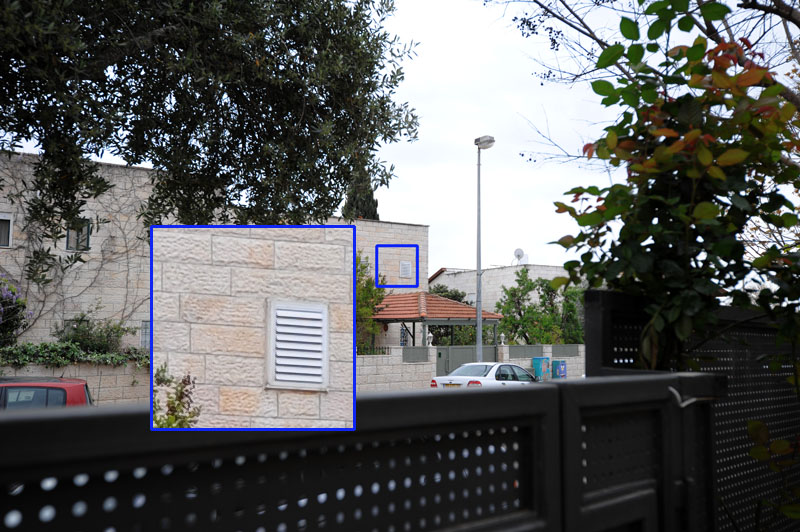 | | Model: NIKON D700 Exposure Time: 1/500sec F Number: 5.6 Max Aperture Value: 4 Focal Length: 35mm Exposure Program: Aperture priority Exposure Bias Value: 0 ISO Speed Ratings: 400 Metering Mode: Pattern White Balance: Auto white balance Flash: Flash did not fire Focal Length In 35mm Film: 35 Date Taken: 2010:03:19 12:45:22 Color Space: sRGB |
The sharpness at the frame edges is not at its best, but at the rim from the right to the left it is fine at the 16mm state with a wide open aperture, as in the MTF: 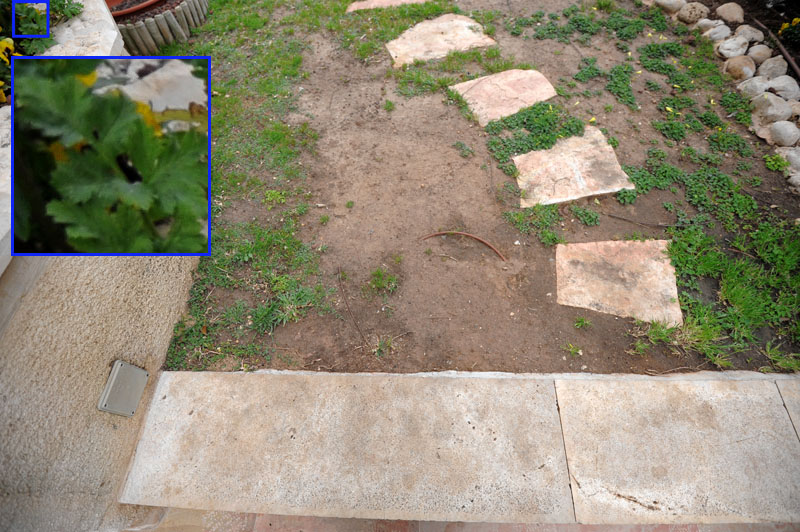 | | Model: NIKON D700 Exposure Time: 1/400sec F Number: 4 Max Aperture Value: 4 Focal Length: 16mm Exposure Program: Aperture priority Exposure Bias Value: 0 ISO Speed Ratings: 400 Metering Mode: Pattern White Balance: Auto white balance Flash: Flash did not fire Focal Length In 35mm Film: 16 Date Taken: 2010:03:19 12:53:12 Color Space: sRGB |
The efficiency of the VR mechanism can be seen here with 100% crop taken by hand in the tele state. Exposure time is about 2/3 of a second, which fits the statement that there is a 4 stop speed stabilizer:  | | Model: NIKON D700 Exposure Time: 0.625sec F Number: 4 Max Aperture Value: 4 Focal Length: 35mm Exposure Program: Aperture priority Exposure Bias Value: 0 ISO Speed Ratings: 200 Metering Mode: Pattern White Balance: Auto white balance Flash: Flash did not fire Focal Length In 35mm Film: 35 Date Taken: 2010:03:19 12:54:36 Color Space: sRGB |
On other occasions I got reasonable results (some very sharp, others less sharp) even at exposures of 1 second and more. No doubt the stabilizer is very effective. This enables shooting by hand, on the street at night, or in shadowy rooms without needing to raise the iso to levels that are too high. The following is a table summarizing the test results: 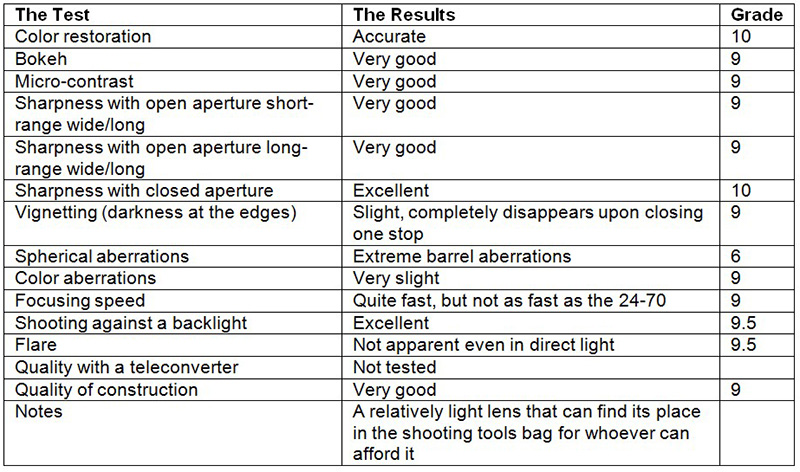 | | Color Space: 65535 |
And the bottom line? If you do not yet own a high quality zoom lens for a Nikon FF camera, this one should be seriously taken into consideration, if your budget permits it. It is far better than the 18-35, very close in performance to the 17-35 and the 14-24, and when considering optics only, the 14-24 leads (it also leads in weight and price). Many people think that wider is better, especially for events photography. They found out that when using lenses with a permanent 14mm or 14-24mm for events shooting, the natural aberrations that these lenses produce at the picture edges – where people suddenly become obese, are not popular with the clients. I think that 16mm on FF is the widest possible level for events photography, and also then it is not recommended to locate people at the frame edges. In my opinion, 24mm for FF is the ideal focal length. The view angle of this lens is very large – 107 degrees at the wide angle state (the 14-24 lens on the FF presents a maximal angle of 114 degrees and the 17-35 presents an angle of 104 degrees) so this lens is situated somewhere in the middle. The fact that this lens is not really sharp at the edges at an open aperture in the 16mm state is insignificant and the sharpness improves when closing aperture. The marginal vignetting of corners, the absence of color aberrations as well as its performance with backlight and the excellent bokeh are in its favor. The weak point of this lens is the spherical aberration visible indoors and for parallel lines in the wide-angle state. This can be fixed easily if disturbing – but this aberration is practically non-existent in the 14-24. To be exact, Nikon's professional line does not include a similar aberration.
The Canon line includes a similar lens – the 16-35/2.8 II with similar aberrations (but not so intense) and so does the Canon 17-40. Despite this aberration, which can be observed indoors or in architectural photography – the lens is fit for outdoor shooting, shooting view or any other use of wide-angle lenses. Its ability to shoot close range, and create drama in a picture combined with close range shooting and the wide-angle are great advantages. Its strongest point in my opinion is the inclusion of the highly effective stabilizer. This makes this lens very useful for static night shooting and also in very poor lighting conditions. I wish Nikon's 24-70 would have such a stabilizer. Generally its advantages overcome the disadvantages and it can become a practical ultra-wide lens for photographers using the Nikon FF cameras at a cost of about two thirds of the 14-24 lens. |





